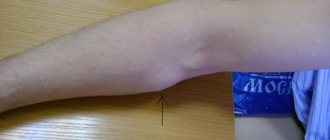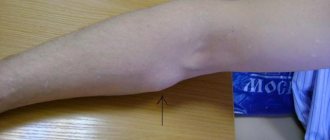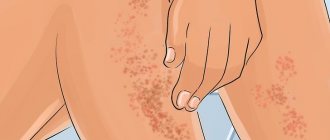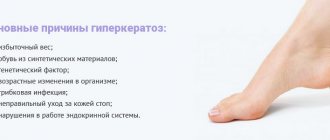Paraffin bath for hands and feet - how the procedure works
A paraffin bath for hands and feet is a procedure in which the limbs are immersed in a container filled with heated paraffin to deeply moisturize the skin of the limbs.
Hands or feet are lowered into a bath of molten paraffin several times: each time after the previous layer has hardened, to create the next paraffin layer (usually 3-5 layers are made). If you have dry skin on your hands or feet, or have cracked skin, then a paraffin bath for your hands and feet is an excellent solution to these problems. Cosmetic paraffin in the molten state creates an air- and waterproof film on the skin, which facilitates the penetration of oils contained in the cosmetic paraffin itself into the deeper layers of the skin.
Paraffin therapy for hands and feet: video
Therefore, paraffin hand baths - reviews confirm this - are very well suited for soothing and healing chapped skin, especially in the autumn-winter period, when exposure to weather conditions has a detrimental effect on the condition of the skin of the hands. And it’s not at all necessary to go to the salon for this, because... It's very easy to make paraffin hand baths at home.
Both in the salon and at home the procedure will be absolutely the same. In salons, paraffin therapy for hands, the price ranges from 500-800 rubles per procedure. All you need is to purchase a paraffin bath once and periodically replenish your supplies of cosmetic paraffin. Below we will describe in detail how to make paraffin baths for hands or feet.
Precautionary measures
There are a number of rules, compliance with which is important to achieve the greatest therapeutic effect and prevent thermal burns and skin infections. For example, paraffin treatment at home will be effective only if these measures are strictly followed in the same way as in a physical room.
- The temperature when applying the first layer should not exceed 55 degrees, so as not to burn the patient. When applying subsequent layers, it is also important to ensure that the paraffin is not too hot.
- The skin on which the procedure is performed must first be cleaned and disinfected.
- The paraffin itself needs to be sterilized after each use. It is carried out in an autoclave or by heating to 100 degrees.
- If the procedure is being carried out for the first time, it is better to conduct a spot allergy test to exclude a possible reaction to paraffin or additional components. To do this, a small drop of the substance is applied to the elbow. The result is assessed in about half an hour.
- After thermal treatment, it is better not to go outside for two to three hours in order to avoid hypothermia.
- Indications for paraffin treatment should be assessed by a doctor or cosmetologist. Only a specialist can determine the area of influence, the number of necessary procedures and evaluate the result afterwards. Self-medication can be harmful to health, especially when it comes to the treatment of inflammatory processes and diseases of the musculoskeletal system.
The opportunity to undergo paraffin therapy is available in all physiotherapy rooms. You can sign up for a course of procedures at one of the Moscow clinics and undergo effective treatment under the supervision of experienced specialists.
Paraffin therapy at home - what is needed for this
If you really like the paraffin therapy procedure, but you don’t have time to constantly visit beauty salons, then you can set up a salon at home. Paraffin therapy for hands at home requires only a few things:
- A paraffin therapy bath for hands and feet can be bought on the Internet for relatively little money (from 2,500 rubles).
- Cosmetic paraffin - you can also buy it on the Internet or in a pharmacy. For cosmetic paraffin, the price at the pharmacy starts from 220 rubles per 450 ml. To start using a paraffin bath, you will first have to fill it with 1.5 kg of paraffin, and then add it as you use it. As a rule, 450 grams of paraffin is enough for 4-6 procedures for hands or 2-4 procedures for feet.
Paraffin bath for hands and feet – which one is better to choose?
Many may have completely reasonable questions - how to choose a paraffin bath, what you need to pay attention to when purchasing, what a comfortable bath for paraffin therapy should look like. So, a good and comfortable paraffin bath for hands and feet should -
- Have sufficient volume and size so that you can freely put your arms, elbow or feet into it. So, a volume of 1500-2000 ml is usually sufficient if you are going to use the bath only for your hands. More volume is already needed for the legs, but again it all depends on your build.
- Have a quick heating function - different baths have different heating times for paraffin (from 1.5 to 4 hours). Of course, the faster the paraffin heats up, the more convenient and better it is for you.
- Have a paraffin heating indicator - as well as a thermostat to maintain the desired temperature.
- Have a filter on the bottom to collect unwanted particles and make it easier to clean the bath itself, as well as a lid for the bath so you can store cooled cosmetic paraffin directly in it.
- To be resistant to tipping over - it is best if it is attached to the surface of a table or floor using suction cups.
- Have an affordable price - you can buy paraffin baths for hands and feet on the Internet ranging from 2500 to 4500 rubles.
What paraffin baths do we recommend ? On the Russian market, the choice of paraffin baths for home (and not for salon) use is small, and is represented by only a few manufacturers, most of which are of unknown origin. We have noted 2 models, the manufacturers of which provide more or less complete specifications, and which are quite convenient for use at home -
- Bath "Gezatone WW3500" (Fig. 4) is a paraffin bath from a French manufacturer at a price of about 4,000 rubles).
- Bath for paraffin therapy “Harizma” (Fig. 5) - from a Chinese manufacturer, priced from 2,500 rubles.
Both baths heat up paraffin in 1.5-2 hours, have a volume of about 2000 ml, with a minimum paraffin level of 1500 ml. Also, these paraffin baths are equipped with thermostats that allow you to heat and maintain the temperature of the paraffin within 52-70 degrees.
Which cosmetic paraffin to choose?
Cosmetic paraffin is made with the addition of oil essences, various fragrances, and dyes. Therefore, choosing which cosmetic paraffin to buy depends on your personal taste, aesthetic and olfactory preferences. Often additional aroma oils are added to cosmetic paraffin: lemon, jasmine, peach, aloe, rose, green tea, lavender and others.
Most often, cosmetic paraffin is sold in 450 ml packaging. This volume is enough for 4-6 procedures. However, keep in mind: to carry out the first procedure, the paraffin bath must be immediately filled with approximately 1500 ml of paraffin.
Important: if you are going to make paraffin hand baths at home only for yourself, then after the procedure the paraffin can be added back to the bath and reused. And if someone else (except you) uses a paraffin bath, then the paraffin removed from the skin must be thrown away. Sometimes the manufacturer of cosmetic paraffin writes whether this type of paraffin is suitable or not for reuse (24stoma.ru).
Application of paraffin in medicine
Paraffin applications and wraps are widely used in medicine and cosmetology. Due to its beneficial properties, paraffin is used to treat various types of diseases. For example, the procedure is used for bone fractures for rapid healing of injury, for ruptured ligaments, neuralgic disorders, chronic bronchitis and pneumonia, for adhesions after operations, for the treatment of female gynecological diseases, and for skin diseases of almost any nature.
Practicing cosmetologists and numerous beauty salons use paraffin to maintain youth and turgor of the skin of their clients, as well as to combat cellulite on the thighs, buttocks and abdomen.
Paraffin therapy at home - method of implementation
First, heat the cosmetic paraffin in a bath to the required melting temperature (50-65 degrees). Modern paraffin baths are equipped with special sensors that heat the paraffin to the desired temperature and turn off the heating. Cosmetic paraffin from different manufacturers may have different heat capacity, and therefore the heating temperature may differ slightly (the recommended temperature is indicated by the manufacturer in the instructions).
Thus, it will not be possible to overheat the paraffin. But just in case, check the temperature of the heated paraffin on the back of your hand - you should feel warm, but not burning. The sequence of your further actions is
- Remove all jewelry and jewelry from your fingers.
- Wash and dry the skin on the treated area thoroughly. Keep in mind that the clearer the skin, the longer you can use the same paraffin for subsequent treatments.
- Treating the surface of the skin with cream. In general, this stage is performed only at your request, and is not mandatory, because Cosmetic paraffin already contains skin-moisturizing oils. The advantage of pre-treatment with cream is that the hardened paraffin will then be easier to remove.
- Relax your arm or leg and slowly immerse it in a paraffin bath with heated liquid paraffin for 10 seconds. Lower your hand slowly and carefully, without touching the walls and bottom of the bath, so as not to get burned (Fig. 11-12).
- Remove your hand/foot from the bath and wait a few seconds until the paraffin hardens and stops dripping.
- Place the limb back into the bath and remove it after a few seconds.
- Repeat until the arm/leg is covered with several layers of paraffin (usually 3-5 layers).
- After this, wrap the limb in cling film or put a plastic bag on it (Fig. 13).
- Wrap the limb in a terry towel on top to increase the duration of the thermal effect.
- Rest like this for about 15-30 minutes, imagining how the skin on your hands (or feet) becomes soft, tender and moisturized.
- After 15-30 minutes, simply remove the frozen paraffin from your arm or leg. You can put it back in the bath to use next time (Fig. 14). Next, enjoy moisturized and soft skin on your hands or feet.
Mechanism of action on the body
When dipping or applying layer-by-layer paraffin to areas of the body, it begins to slowly transfer temperature from the skin deep into the tissues. The thermal effect is slow and gentle; to enhance the effect, the patient is covered with a blanket. Local hyperthermia increases blood flow in tissues, activates local humoral immunity, stimulates lymph flow and removes excess fluid from the intercellular space. Thanks to this, swelling is reduced, cells are better supplied with oxygen and nutrients, and the effect of medications prescribed to the patient is enhanced.
In parallel with the thermal effect, paraffin also has a mechanical effect. As it cools, it crystallizes and decreases in size, thereby tightening the skin.
These properties help fight congestion, inflammation and painful spasms. The method can be used in the treatment of both adults and children.
How to make a paraffin face mask correctly -
Important: for the procedure, only special cosmetic wax is used specifically for the face, intended specifically for use at home.
You must carefully read the instructions for the wax, and pay special attention to the temperature to which it needs to be heated. Paraffin facial therapy: video
How is the procedure performed? –
- The skin of the face and neck must be cleansed with a special cleanser. Thorough washing ensures that dirt, dust, and traces of cosmetics do not clog pores and cause inflammation.
- Before applying a paraffin face mask, reviews from some cosmetologists recommend applying a cosmetic cream or lotion to the skin, which will help additionally nourish the skin with beneficial substances. You can also add your favorite cosmetic and essential oils to the paraffin itself, which will provide additional effects to the procedure.
- Heat the wax in a paraffin bath to the desired temperature. Before applying to the face, check the temperature of the paraffin. To do this, it is recommended to apply heated paraffin to the back of your hand - it should be pleasantly warm, but not hot.
- Warm paraffin is applied to the facial skin with a special brush, along massage lines, avoiding the eye area, mouth and around the nose, so that you can breathe freely during the procedure. Start applying paraffin from the middle of the chin, moving up to the cheeks and ears. The chin is covered last.
- Typically 3-4 layers of paraffin are applied, and the resulting paraffin face mask should be about 5mm thick. Paraffin wax may be too thin and drip, so use old or unwanted T-shirts during the procedure.
- Typically, a paraffin facial mask should remain on your skin for 10-15 minutes or until it sets completely. After which it is carefully removed from the face completely or in parts, starting from the chin.
- After the procedure, it is recommended to apply a moisturizer to the skin. In winter, after the procedure, it is not recommended to go outside for an hour.
What paraffin is used in paraffin therapy?
Many people have heard about the hot paraffin therapy method. But there is also a method when the already cooled product is applied to the skin. Cold paraffin therapy is considered a complex method, so it is easier to follow the classical scheme: heat the product and apply a liquid solidifying mass to the body.
Manufacturers add ready-made compounds to paraffins, which themselves have a healing effect. For example, the addition of vitamins stimulates skin regeneration, nourishes and moisturizes the epidermis. Seaweed extract effectively fights cellulite. But even without adding additional ingredients, the paraffin mass has a beneficial effect on the skin.
Paraffin therapy: indications and contraindications
We discussed above what the use of paraffin therapy in cosmetology can achieve. This method is also used to treat the following diseases –
- joint inflammation (arthritis, bursitis),
- joint dislocations,
- muscle spasms, muscle strains, fibromyalgia,
- rheumatism,
- to soften scar tissue,
- eczema, psoriasis,
- diseases of ligaments and tendons with a pain component.
Contraindications to paraffin therapy –
- infection and inflammation on the treated skin,
- open wounds, cuts,
- for diseases that reduce or increase the skin sensitivity threshold.
Paraffin therapy is also not recommended –
- for hypertension,
- for diabetes mellitus,
- with varicose veins.
The benefits of paraffin therapy
The main healing properties of paraffin applications include:
- Compression effect. After hardening, paraffin decreases in volume by approximately 10% - this property indicates a tightening effect; tissue lymph flow is enhanced due to compression.
- Metabolism accelerates, which promotes the rapid removal of harmful substances from the body.
- Anti-inflammatory effect. The lingering and spreading heat deep into the layers of the human body contributes to the rapid relief of painful sensations and the healing of the body, both mono and complex. Paraffin therapy is widely used for the treatment of joints, restoration of muscle tone, for fractures, acute respiratory viral infections and acute respiratory infections, and therapy of internal organs.
- Skin renewal (rejuvenation, resorption of scars and scars).










